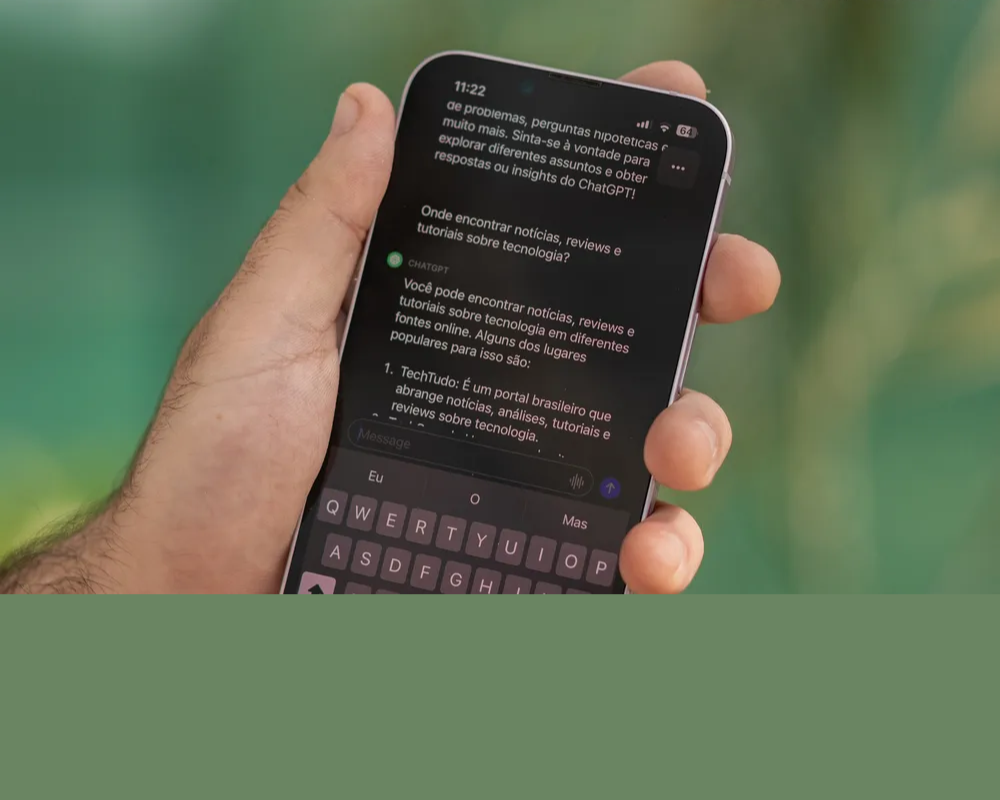Transform Your Writing with Free Apps for Creative Writing
Free Apps for Creative Writing are revolutionizing how individuals unleash their creativity and master the art of written expression.
These tools provide an accessible platform for exploring new ideas, honing writing skills, and crafting compelling narratives that connect with audiences.
The Power of Creative Writing
Creative writing is not just a powerful form of expression but also a bridge between thoughts, emotions, and the external world of communication.
With the aid of Free Apps for Creative Writing, this process becomes more intuitive and engaging, offering writers tools to organize their thoughts, experiment with styles, and elevate storytelling.
The Importance of Writing in Today’s Digital Age
In today’s fast-paced digital world, Free Writing Tools are essential for more than just authors and poets.
Professionals across industries rely on these apps for personal expression, content creation, and persuasive communication.
Whether you’re drafting a novel, composing poetry, or brainstorming for a marketing campaign, Creative Writing Apps make the process seamless and efficient.
Driving Success Across Industries
As the demand for creativity grows in fields such as advertising, public relations, web content development, and business management, Free Apps for Creative Writing help make messages impactful and memorable.
They empower users to enhance storytelling, engage readers, and craft narratives that resonate deeply.
Features That Enhance Creativity
For those looking to refine their craft, Creative Writing Tools offer a variety of features:
- Brainstorming prompts: Spark ideas and overcome writer’s block.
- Grammar and style checks: Polish your work to perfection.
- Structured frameworks: Turn abstract ideas into cohesive and polished pieces.
These apps are invaluable for crafting fiction, essays, or professional documents.
Unleash Your Potential with Free Apps for Creative Writing
Explore the possibilities with Free Apps for Creative Writing today and see how they can revolutionize your approach to storytelling, content creation, and personal growth.
Whether you’re a seasoned author or an aspiring writer, these tools can help turn your creative ideas into captivating works of art.
The Evolution of Creative Writing in the Digital Era
The rise of the internet and the global connectedness it facilitates have transformed creative writing into a much more accessible and widespread practice. Creative writing has shifted from being solely an artistic pursuit to becoming a vital component of modern communication.
Content Creation as the Heart of Communication
Content creation is at the center of communication in today’s world. Websites, social media platforms, blogs, and other digital spaces thrive on written content. However, with the increase in content production, competition for audience attention has also intensified.
Creative Writing Beyond Traditional Narratives
The stakes for creative writers have risen, requiring them to move beyond traditional narrative styles. Writers must engage their audiences in innovative and dynamic ways to stand out in a crowded digital landscape.
The Expanding Role of Creative Writing
Creative writing’s role has extended beyond fiction into fields like digital marketing, branding, and education. Storytelling has become a core strategy in:
- Marketing campaigns: Businesses use stories to make products and services relatable to customers.
- Corporate communications: Stories build brand identity and foster connection with stakeholders.
- Education: Creative writing develops critical thinking, emotional intelligence, and language skills in students.
The Impact of Storytelling in Marketing
In marketing, storytelling helps businesses create compelling content that informs and inspires action. It allows brands to connect with customers on an emotional level, making their products or services more relatable and memorable.
Creative Writing as a Tool in Education
Educators use creative writing as a powerful tool to teach not only language and structure but also critical thinking. By engaging students in storytelling, they foster creativity and enhance their ability to process and express complex ideas.
The Business Case for Creative Writing
In business, persuasive and clear writing is indispensable. Leaders and managers rely on writing to communicate effectively through emails, proposals, and reports. Creative writing helps:
- Build strong narratives.
- Foster teamwork and collaboration.
- Drive innovation and customer engagement.
Why Use Apps for Creative Writing?
Creative Writing in Your Pocket
One of the greatest advantages of using free apps for creative writing is the ability to carry your writing practice with you wherever you go.
With these apps, writing is no longer limited to the confines of a desk or a specific location. Whether you’re traveling, waiting in line, or simply taking a break, you can easily pull out your phone and begin writing.
Apps like Writing Challenge and Reedsy Prompts offer daily prompts that can help overcome writer’s block and keep the creative juices flowing.
Whether you need to get the words flowing for a short story, a blog post, or an email, these apps provide the inspiration you need.
For example, Reedsy Prompts offers weekly challenges that encourage writers to experiment with different genres and narrative styles, making the process of writing exciting and new every time.
Transformative Benefits of Creative Writing Apps
Constant Inspiration: Apps like Writing Challenge offer daily or random prompts that help unblock creativity, encouraging writers to think outside the box with both simple and complex tasks.
Practical Organization: Tools like Evernote and Scrivener help organize ideas, research, and drafts. Evernote allows multimedia organization, while Scrivener is ideal for large projects, offering section breaks and outline views.
Technical Improvement: Apps such as Grammarly and Hemingway provide real-time grammar feedback. Grammarly focuses on error correction and flow, while Hemingway simplifies sentences for clarity and readability.
Flexibility and Accessibility: With Writer Plus, writers can work offline and write anywhere, ensuring that the creative process is uninterrupted, even when on the go.
Technology as an Ally of Creativity
Facilitating Writing in Everyday Life
The role of technology in creative writing is not just about providing tools—it’s about empowering writers to unleash their potential.
Apps take over many of the mundane aspects of writing, such as grammar checks and formatting, which means that writers can spend more time focusing on their ideas and storytelling.
With the ability to access writing apps on smartphones and tablets, writers are no longer constrained to a single space. Writing becomes a mobile experience, always at your fingertips.
Creativity and Innovation in Every Project
Apps like JotterPad and Scrivener give writers the flexibility to structure their writing process exactly the way they want.
Whether working on a novel, a business proposal, or a marketing campaign, these tools allow for detailed planning and seamless editing.
Writing Challenge adds an element of fun by turning writing into a game, which helps foster creativity through deadlines and challenges.
This approach can not only stimulate new ideas but also create a sense of accomplishment and motivation.
Explore the Best Free Apps for Creative Writing
With so many free apps available today, it can be overwhelming to decide which ones best suit your needs.
Fortunately, the apps presented here have been selected for their usefulness, versatility, and effectiveness in improving creative writing.
These tools provide writers of all levels with the support they need to stay inspired, organized, and productive.
1. Grammarly
Grammarly is more than just a spell checker. It works as a complete writing assistant, helping to improve every aspect of your text.
Main Features:
- Real-time correction: Detects grammar, spelling, and punctuation errors as you write.
- Personalized suggestions: Offers tips to improve clarity and tone.
- Impact analysis: Assesses how effectively your text conveys the correct message to your audience.
- Wide compatibility: Works in browsers, desktop apps, and mobile devices.
User Testimonial: “Grammarly is my trusted editor, helping me write professional texts without mistakes!” – Sarah K.
Question to the Reader: Have you ever tried a tool that automatically corrects and improves your writing?
2. Evernote
Evernote is ideal for those who need to organize ideas efficiently. With it, you can keep your projects and notes organized in one place, accessible anytime.
Main Features:
- Multimedia notes: Add text, audio, images, and links directly to your notes.
- Organization by notebooks: Manage different writing projects easily.
- Advanced search: Quickly find your old notes by keywords.
- Automatic synchronization: Access your notes on any device.
Use Case: Jane S. shares: “I use Evernote to collect ideas and keep all my drafts organized, even while traveling!”
3. Writer Plus
For those who prefer simplicity, Writer Plus offers a minimalist and focused environment, ideal for writing without distractions.
Main Features:
- Clean interface: Free from distractions, ideal for maintaining focus.
- Lightweight and efficient: Consumes little memory on the device, great for quick writing.
- Offline mode: Write without needing an internet connection.
- Markdown support: Facilitates text formatting.
User Testimonial: “Writer Plus is my choice for quick and clean drafts. It doesn’t interfere with my creativity!” – John H.
4. Hemingway App
Hemingway App is ideal for writers who want to improve the clarity and impact of their texts by eliminating unnecessary words and simplifying sentences.
Main Features:
- Readability analysis: Assesses the difficulty level of your text.
- Direct suggestions: Identifies passive and hard-to-understand sentences.
- Highlight improvements: Highlights words and phrases that can be simplified.
- Impact indicator: Helps make each sentence more efficient.
Question to the Reader: How would your writing improve if every sentence were simple and clear?
5. JotterPad
Focusing on writers who need powerful tools, JotterPad balances functionality with simplicity.
Main Features:
- Dark mode: Ideal for long nighttime writing sessions.
- Versatile export: Convert files to PDF, plain text, or Markdown.
- Idea bank: Save snippets or loose phrases for later use.
- Script support: Perfect for screenwriters and playwrights.
6. Writing Challenge
Writing Challenge turns writing into a game, ideal for unlocking creativity with engaging challenges.
Main Features:
- Dynamic prompts: Generates creative challenges randomly.
- Timer: Adds excitement with writing deadlines.
- Collaborative stories: Work on texts with friends.
- Offline mode: Write anywhere, uninterrupted.
User Testimonial: “With Writing Challenge, I never struggle with writer’s block again!” – Amanda L.
7. Reedsy Prompts
Reedsy Prompts offers creative challenges based on literary themes, encouraging writers to explore different genres.
Main Features:
- Thematic prompts: Create stories based on weekly challenges.
- Active community: Share stories and get feedback.
- Writing contests: Participate in weekly competitions.
- Educational resources: Tutorials to enhance writing skills.
8. Scrivener (Free Version)
Scrivener is an essential tool for complex projects, offering complete control over organization and structure.
Main Features:
- Section division: Work by chapters or smaller parts.
- Supporting notes: Insert references and relevant information alongside the main text.
- Customizable editor: Choose fonts and styles for comfort.
- Cloud integration: Access your projects from any device.
9. Microsoft OneNote
OneNote is a comprehensive alternative for organizing ideas and collaborative projects.
Main Features:
- Pages and sections: Structure your notes however you prefer.
- Real-time collaboration: Work with colleagues on writing projects.
- Multimedia: Include videos, images, and audio in your notes.
- Office integration: Combine with Word or Excel.
10. Writer’s Companion
Writer’s Companion is ideal for fiction writers who need to plan characters, settings, and complex
plots.
Main Features:
- Character profiles: Create detailed biographies.
- Timeline: Organize events in chronological order.
- Quick references: Instantly access important information.
- World-building: Perfect for elaborate fictional universes.
Comparative Table: Best Free Apps for Creative Writing
| App | Main Feature | Best For | User Rating |
|---|---|---|---|
| Grammarly | Grammar correction | Improving style and avoiding errors | ⭐⭐⭐⭐⭐ (4.8/5) |
| Evernote | Multimedia notes | Organizing ideas | ⭐⭐⭐⭐ (4.5/5) |
| Writer Plus | Minimalist interface | Offline writing | ⭐⭐⭐⭐ (4.4/5) |
| Hemingway App | Text simplification | Improving clarity | ⭐⭐⭐⭐ (4.6/5) |
| JotterPad | Advanced editor | Scripts and exports | ⭐⭐⭐⭐⭐ (4.7/5) |
| Writing Challenge | Writing gamification | Creative stimulation | ⭐⭐⭐⭐ (4.4/5) |
| Reedsy Prompts | Weekly challenges | Inspiration for stories | ⭐⭐⭐⭐⭐ (4.8/5) |
| Scrivener | Project organization | Long projects | ⭐⭐⭐⭐ (4.6/5) |
| OneNote | Flexible structure | Collaborative projects | ⭐⭐⭐⭐ (4.5/5) |
| Writer’s Companion | Story planning | Science fiction and fantasy | ⭐⭐⭐⭐ (4.6/5) |
Conclusion: Transform Your Ideas with the Best Apps
Free Apps for Creative Writing are essential tools for anyone who wants to improve their writing skills and increase productivity.
Each app offers features that meet different needs, from organizing ideas to improving technical writing. Additionally, these apps make the creative process more fluid, practical, and inspiring.
Discussion: What Do Users Say?
Looking at the comparative table, it’s clear that each app has specific advantages and disadvantages, and the best choice depends on each writer’s goal.
For example, Grammarly is perfect for quick and effective corrections, while Evernote is excellent for keeping multimedia ideas organized.
Reader’s Invitation
Download the apps from the Google Play Store or App Store and discover which one can transform your creative process.
Try different options, share your experience in the comments, and help other readers choose the tool that best suits their writing style.
Let’s build a creative and inspiring community together!





